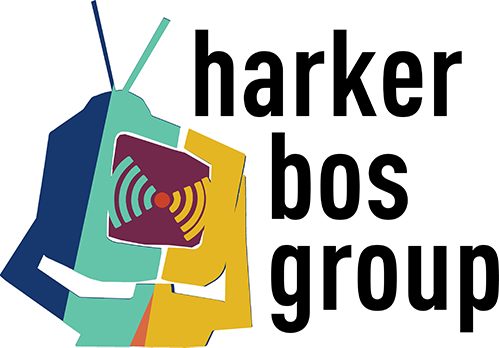Weekly Roundup – Week of September 26, 2022
Sports Media & Sports Betting News
Regional Sports Networks, Once Considered The Crown Jewels Of Broadcast, Now Barely Breaking Even
“In a stunning reversal of fortune, rumors abound that Diamond Sports Group (DSG), a subsidiary of Sinclair Broadcasting Corp. which runs the Bally Sports Networks (formerly Fox Sports Networks as well as YES Network and Marquee Sports Network (co-owned with the Chicago Cubs)) is in trouble. Reportedly, it is teetering on the edge of bankruptcy just months after its roll-out a streaming service for the Regional Sports Networks (RSNs) called Bally Sports Plus (BSP).
Just months ago management touted that the streaming service could bring in $1.3 billion to $1.9 billion in revenue in five years and somewhere between $444 million and $1.3 billion in EBITDA by 2027.
Management is reportedly talking to the NBA, MLB and NHL regarding a fire-sale buy-out. Under the plan, creditors would take over the RSNs, give Sinclair $3 billion in cash and a minority interest in DSG, and then sell the RSNs back to the leagues. This will be tricky because many of the RSNs carry multiple sports.”
Massachusetts Hits Sports Betting Snag
“Massachusetts regulators are wrestling with a gap in the new sports betting legalization law.
What’s happening: The law allows for temporary licenses, but doesn’t cap them or stipulate how they should be awarded.
Meanwhile, it limits the number of permanent sports betting licenses for casinos, simulcast horse race tracks and mobile sportsbooks to roughly a dozen.
Regulators are debating whether to issue more temporary licenses than permanent ones and are considering what would happen if a sportsbook were denied a permanent license and had to close post-launch.”
‘The Demographics Are Undeniable.’ Latinos Are The Future Of US Sports, Industry Leaders Say
“Some of the highest-ranking executives in professional sports convened in San Diego on Saturday to discuss the outsized significance of Latino fans and athletes, who they say are essential to the future prosperity of the industry.
The message, presented alongside supporting data from Boston Consulting Group and Ampere Analysis, was delivered during a morning panel on the economics of sports at the L’Attitude conference at the Manchester Grand Hyatt San Diego. The event, in its fifth year, spotlights Latino business, innovation and consumers, and is expected to draw 6,000 attendees from around the country.
“When you take the stats against the metrics, you see that Latinos top the charts from every single dimension,” said Daniel Acosta, a senior partner with business-strategy firm Boston Consulting Group, who cited research showing that Latino sports fans spend 20 percent more, on an absolute basis, than non-Latinos. “They are the ideal sports fan.””
Read more on SanDiegoTribune.com
Politics + Media + Radio News
Polling Errors Threaten Public Confidence In Elections
“The polling industry has faced criticism for underestimating Republicans through several cycles. Pollster Nate Cohn recently wrote that the 2022 polls could do it again. These continued misjudgments can undermine public faith in how the media covers elections. Worse still, they can affect the result of close races.
Many 2020 Senate polls underestimated Republicans. In Maine, all polls taken during 2020 showed Republican Sen. Susan Collins losing. The last poll before the election had Collins down by six points; she won by 8.6 points. Similarly, the last poll for Montana’s Senate race showed Republican Sen. Steve Daines losing by one point. Daines won by 10 points. South Carolina faced a similar problem, and Iowa, though not as dramatically, also dealt with inaccurate polling. Finally, polls in North Carolina showed Republican Thom Tillis losing. Tillis won.
Bad polls can affect a race in various ways. One of the most important concerns campaign spending. In 2020, GOP donors spent millions in races propping up incumbents who they thought were in trouble.
Conversely, donors may have abandoned candidates who they believed were too far behind. Many wrote off Collins. In Arizona, polls during the final week showed Republican incumbent Sen. Martha McSally down by as much as 10 points, but she lost by only about two. A Fox News poll from two months before the election had McSally down by 17 points. When that poll was released, much of the media counted McSally out. While it’s possible that the polls tightened, it seems more likely that she was never really down by 17 points.”
Read more on RealClearPublicAffairs.com
Social Media And News Fact Sheet
“Digital news has become an important part of Americans’ news media diets, with social media playing a crucial role in news consumption. Today, half of U.S. adults get news at least sometimes from social media.
When it comes to where Americans regularly get news on social media, Facebook outpaces all other social media sites. Roughly a third of U.S. adults (31%) say they regularly get news from Facebook.
A quarter of U.S. adults regularly get news from YouTube, while smaller shares get news from Twitter (14%), Instagram (13%), TikTok (10%) or Reddit (8%). Fewer Americans regularly get news from LinkedIn (4%), Snapchat (4%), Nextdoor (4%), WhatsApp (3%) or Twitch (1%).
When looking at the proportion of each social media site’s users who regularly get news there, some sites stand out as having a greater portion of users turning to the site for news even if their total audience is relatively small. For example, while Twitter is used by about three-in-ten U.S. adults (27%), about half of its users (53%) turn to the site to regularly get news there. On the other hand, roughly the same share of adults (31%) use LinkedIn, but only 13% of its users regularly get news on the site.”
Podcasting Is Just Radio Now: It’s Been Ages Since The Last Blockbuster Narrative Show. What Does That Mean For The Medium As An Art Form?
“It’s been almost eight years since Serial dropped. An entire industry has roared to life, drawing in Hollywood studios, corporations, celebrities, and billions of dollars. But the blockbuster podcast — a subgenre or prestige tier essential to the medium’s rise as an artistic force — is in a serious funk. Your phone is full of podcasts, I’m sure, and maybe you’ve convinced a friend to add one of your darlings to their queue. But when was the last time a single title was being dissected by everyone you know?
For some in the business, the medium’s diminishing ability to drive such moments poses an existential problem. What does it mean for podcasting as an art form if it rarely inspires widespread critical discussion? “Let me put it this way: The Bear was a hit,” said Fowlkes (now a podcast talent agent with the Gernert Company), referring to the summer’s breakout TV show. “It was in the conversation. Nothing in podcasting right now feels like it ripples outside of the bounds of people who already listen to podcasts.”
Sometimes, the joke you’ve surely heard — that everyone has a podcast now — starts to feel literally true. Apple Podcasts lists 2.5 million shows; Spotify claims twice as many. Data in this field are notoriously spotty, but to place this in context: When Serial premiered, Libsyn, then one of the largest podcast-hosting platforms, supported only around 22,000 shows. Max Linsky, who co-founded Pineapple Street Studios, the shop that made Missing Richard Simmons, believes this exponential growth uniquely disadvantages narrative titles. “With Simmons, I don’t think too many limited-run podcasts launched within that six-week window, if any,” Linsky said. “Now, there’s a new, ambitious one every day. It’s harder to get to a place where lots of people are listening simultaneously.”
The crowded market has made almost everything in the business more difficult. There’s only so much real estate on the Apple Podcasts app, whose charts and editorial pages are some of the few spaces where audiences can reliably discover new shows. That congestion has also widened the gap between incumbents and outsiders. Bigger publishers often have established podcast feeds through which they can advertise new releases; smaller studios typically don’t. Meanwhile, costs are going up for podcast marketing, still a nascent practice, with some publishers now willing to spend six digits to advertise on other podcasts, social media, websites, and even outdoor billboards.”
Recent Blogs on HarkerBos.com
HBG Media Minute: Radio Presets Are Alive and Well
In the latest installment of the Harker Bos Group Media Minute, Sean dives into recent research exploring the current use of radio presets in cars.


